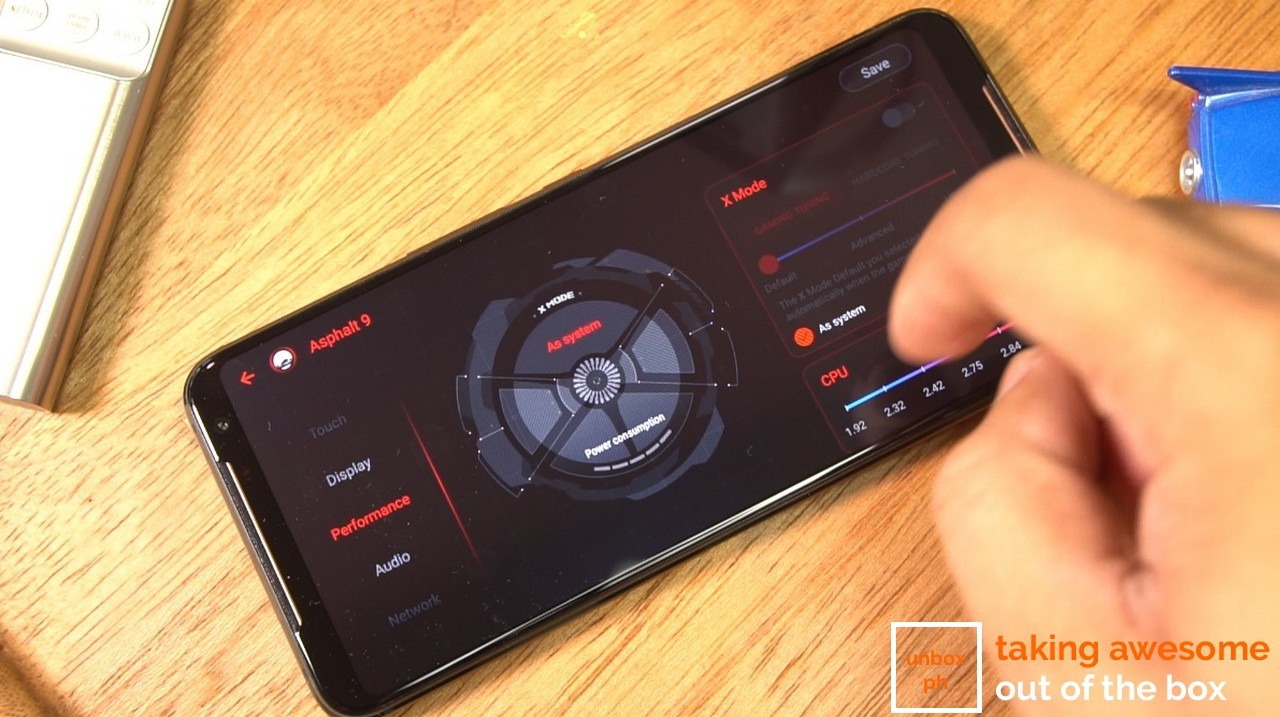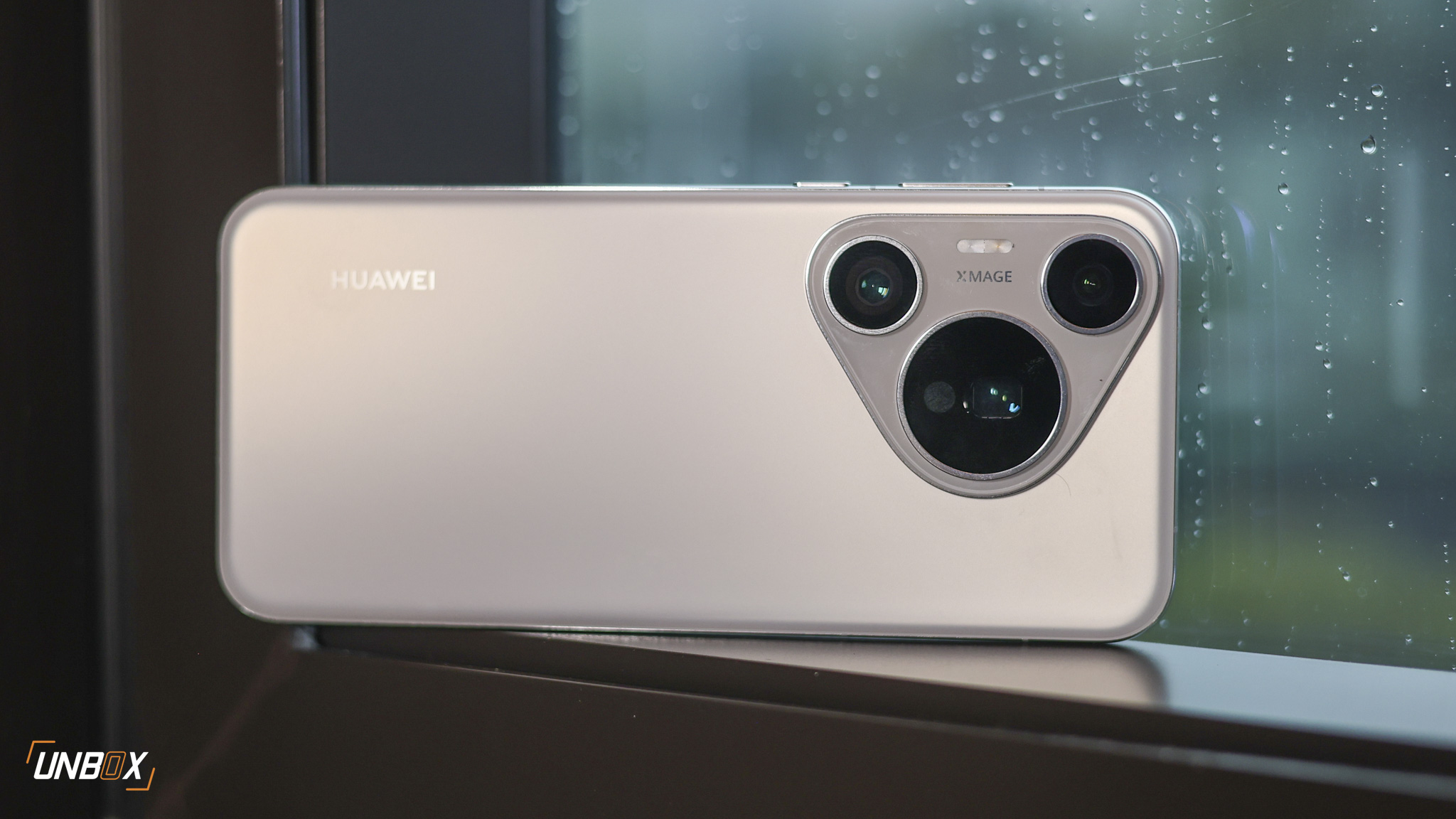
We review the ROG Phone II!
ASUS has had trouble selling their various smartphone models for a couple of quarters now, one model has continously proven to be a hit with a very specific demographic: the gaming-focused ROG Phone. Despite the first ROG Phone’s steep price, it sold really well both here in abroad, enough that it’s the only phone in the company’s lineup that’s getting a refreshed model here in the Philippines.
So here we are with the ROG Phone II. It’s bigger, has a better set of features than the first one and after handling a few other gaming phones, we’d wager it’s the best gaming phone you can buy currently.

Design is definitely gamer-chic, but don’t let that stop you
Since the ROG Phone II is made for gamers, its overall design is tailored specifically for that particular demographic. Sharp lines, colored accents as well as a logo that’s lit by RGB lighting dominate the rear of the phone.
That aesthetic is nothing new to me, though personally I’m not a fan of “hey look at me I’m a gamer” design language. That doesn’t mean that the ROG Phone II is ugly, it’s just not my jam design-wise, though there’s one thing that you can’t take away from it: the phone is built like a brick.

It’s pretty heavy, coming in at 240 grams, and the entire phone feels solidly built. And while the phone definitely has that whole gamer aesthetic going on, ASUS also built in some clever design tricks that contribute to a better mobile gaming experience.


There are two USB Type-C ports on the ROG Phone II – one on the bottom and one on the side of the frame. The side USB Type-C ports allow for phone charging without the cable getting in the way of your grip when you’re playing games, and also serves as the connection point for many of the ROG Phone II’s accessories.

The frame of the phone on the reverse side has improved Air Triggers, which are basically virtual side buttons that you can remap. There are now 12 levels of sensitivity built into them, and you can remap them to whatever function you want in the game that you’re playing. For me, I mapped the right Air Trigger key to shoot my weapon in PUBG Mobile, which frees my right hand from having to physically press the on-screen button, saving a few milliseconds in-game.

These gaming touches also extend to the front. The display doesn’t have a notch to preserve the full-screen gaming experience, and when you’re holding the phone the right way (with the USB Type-C port on the frame facing down) your hands don’t cover the 24-megapixel camera, which you can then use for live streaming.
There are two front-facing speakers built into the top and bottom portion of the display, and they’re incredibly loud for their size.

120Hz display is buttery smooth, though not all games work with it
One of the main draws of the ROG Phone II is its large, 6.59-inch AMOLED panel. It has a 120Hz refresh rate, which makes the phone feel buttery smooth when you’re using it.
The display is chock-full of features, including 108% DCI-P3 coverage, 240Hz touch sampling rate (which means the display registers your touch faster than other displays), 10-bit HDR alongside Gorilla Glass 6 protection.
Resolution is just 2340 x 1080, though that’s more than enough for most people.
While the phone feels buttery smooth with that 120Hz refresh rate, not all games will be able to take advantage of it. Refresh rate is tied to frames per second, and many games in the market nowadays are capped at either 30 or 60 frames per second. ASUS does provide a list of games that can take advantage of the display, but the list doesn’t cover a lot of hugely popular games, which include Asphalt 9, PUBG Mobile, Mobile Legends or even NBA 2K20.
As for actual display quality, there’s really nothing bad we can say about the AMOLED panel on the phone. The phone’s display looks crisp, blacks are deep and colors are extremely vibrant, making the ROG Phone II a great device not just for gaming, but for general content consumption too.

No-compromise gaming
Under the ROG Phone II’s big glass body are flagship internals: it’s the first phone this year to come with Qualcomm’s Snapdragon 855 Plus processor, and while the phone comes in a bunch of different configurations, the one we received for review had 12GB of RAM and 512GB of non-expandable storage.

ASUS also made sure that thermal throttling wouldn’t be a problem with the ROG Phone II – the phone has a 3D vapor cooling chamber to keep temps down, and just like the first ROG Phone, it also comes with the second-gen AeroActive Cooler II, which is basically a small fan that you strap on the phone’s back to draw heat away from the phone’s insides.
If there ever was a phone review where posting benchmarks felt like a formality, it would be the ROG Phone II, and like we expected it has one of the highest AnTuTu benchmarks we’ve ever seen yet.
Gaming on the ROG Phone II is absolutely no problem, as the phone is completely capable of running all of the games that you can think of without a hitch, on their highest settings.

Lots of customizability in the software
ASUS allows gamers to customize RGB lighting, game settings and a bunch of other stuff including phone behavior, as well as mapping keys via the Air Triggers. There’s a lot of customization options here, which is to be expected.
As for the UI itself, it’s a little more cluttered than we expected, but then again the phone was made with the taste of gamers in mind, so it’s not really surprising.

Good camera, though not as great as other flagships
The ROG Phone II has two cameras on the back, which is a rarity for most flagships in its class. The first one is a 48-megapixel Sony IMX576 sensor with an f/1.79 aperture lens, while the second one is a 13-megapixel wide-angle camera. The front camera is a 24-megapixel unit.
Images taken with the phone look good, with good dynamic range, detail, and clarity. It’s not as good as say, photos from Huawei’s P30 Pro (or other similar photography-focused flagships) but it’s good enough to share on social media.

6000mAh battery didn’t last as long as we expected
The ROG Phone II’s overall heft is directly caused by the large, 6000mAh battery inside of its frame.
It’s the largest battery we’ve seen on a smartphone yet, and believe us, the phone needs it.

On 120Hz setting for the display, PCMark’s battery benchmark returned a not so impressive result of 9 hours and 22 minutes, which is what you’d expect from a phone that has less than 4000mAh inside of it.
The phone did better on 60Hz, returning a score of 13 hours and 12 minutes, which is better, though we were expecting more. It’s understandable though – top tier performance requires a lot of power.
The ROG Phone II has a 30W fast charger out of the box, and what’s nice is that the charger works with regular USB Type-C cables, not just the one that ASUS provides which isn’t always the case for most fast-charging systems.

Tons of accessories available, but only a few are must-buy items
One of the biggest appeals of the ROG Phone II is its ability to take accessories made by ASUS. The company actually provided us all of the accessories made for the ROG Phone II as of press time inside a ROG-branded suitcase, which we’re assured will be offered to consumers at launch as a limited-edition item.

There’s quite a bit here but honestly, there’s only a few that are “must buy” accessories. The ROG Kunai gamepad is one, since it essentially gives you better physical controls in many, many games. You can even use it as a Bluetooth controller for PC games as well when it’s not connected to your phone.

Another accessory that you’d want to get is the ROG Lighting Armor case that provides full back protection for your phone. While ASUS throws in a case with every purchase of the phone, it leaves a few portions of the glass back uncovered, including the ROG logo. With the ROG Lighting Armor case, you cover the entire glass back while still retaining RGB lighting.

The other accessories feel more gimmicky – the TwinView Dock II looks great on paper (providing you with two screens, with the second screen giving you additional information on your game) but very few games have twin-display functionality built-in.

The ROG Mobile Desktop Dock allows you to use your phone, well, like a desktop when it’s docked into it, though its functionality is limited, and you’d still want an actual PC to use anyway when you’re working.

The WiGig display (which streams whatever is on your phone’s screen to a TV/monitor wirelessly) is pretty useless since it introduces so much input lag on the TV/monitor that you use that it severely hampers you in FPS/MOBA games. It also has a very limited range when it comes to transmitting information, so you’re limited to a very defined cone in front of the WiGig for it to work at all.

Verdict: the best gaming phone to date, but the wait is killing us
As far as gaming phones go, ASUS’ ROG Phone II is probably the best one you can buy today. With thoughtful, gamer-centric features, excellent performance and solid design, it’s easily our favorite gaming phone today.
Here’s the problem: ASUS is taking its sweet, sweet time bringing over the phone to our shores, and because of that many of the people who want the phone who either have poor impulse control or really want to get it right now are buying grey market China-only Tencent versions of the phone.
Obviously that’s a problem – these phones aren’t supposed to be sold outside of China, have lower specs than the top-tier variant that ASUS will be bringing to the PH and don’t have the right amount of LTE bands (they’re missing the essential 700MHz band that both Globe and Smart use) and more importantly, don’t have Google Play installed, forcing buyers to use workarounds like reflashed ROMs and the like, which introduces their own set of problems.
Because of this, many of the ROG Phone II’s potential buyers are now getting the wrong version of the device, and many of them are (unfairly) not happy with their experience because of the issues we’ve mentioned. ASUS really needs to bring the phone over ASAP to the Philippines so that people will finally be able to properly experience the phone’s gaming greatness.
ROG Phone II Specs
- Qualcomm Snapdragon 855 Plus processor
- Adreno 640 GPU
- 6.59-inch 120Hz/1ms AMOLED panel with 240Hz touch sampling rate, full HD+ resolution, 108% DCI-P3, Corning Gorilla Glass 6, 10-bit HDR (2340 x 1080)
- 12GB of LPDDR4x RAM
- Up to 512GB of UFS3.0 storage
- 48-megapixel Sony IMX586 sensor with an f/1.79 aperture lens, 13-megapixel wide
- angle secondary camera
- 24-megapixel front camera
- Dual SIM
- 3G, LTE
- WiFi, Bluetooth, GPS, A-GPS, under-display fingerprint sensor
- 6000mAh battery
- Two USB Type C ports
- Fast charging up to 30W using supplied charger and regular USB Type-C cable
- Android 9 Pie















